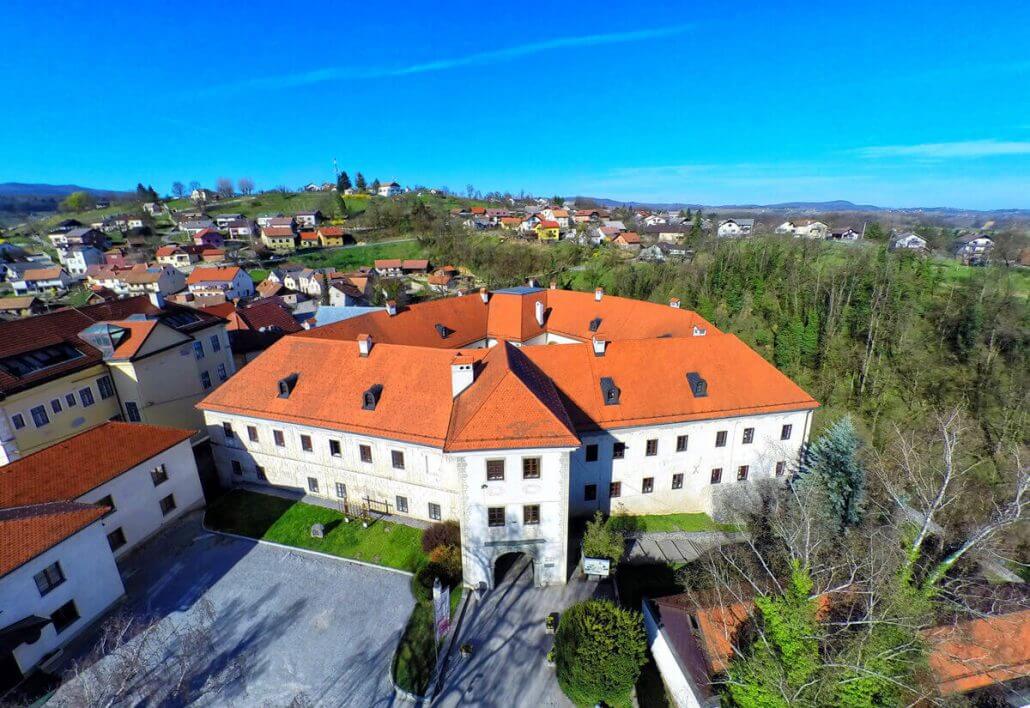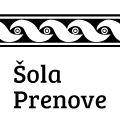WALLED TOWNS
WALLED TOWNS
Piran • Škofja Loka • Kranj • Celje • Ptuj The preserved medieval town walls, which once provided security and survival, today awaken the imagination with countless stories. Enjoy a stroll along the most beautiful highlights of Slovenian history.
Day 1 - Piran
Rising above Piran is a preserved section of the once mighty Renaissance town wall. It offers exceptional views of the sea and the town, which has “grown on salt”. Salt harvesting, which you can still see in the saltpans of Sečovlje, gave rise to the booming town at the time of the Venetian Republic. This is shown in a multimedia presentation in Mediadom.
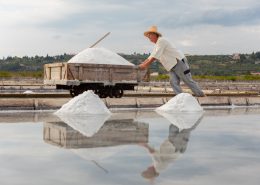
Day 2 - Škofja Loka and Kranj
In Škofja Loka, open your eyes to the Gothic and Renaissance features of the walled medieval town at the foot of the hill, and Loka Castle. Today, the castle houses the Loka Museum, which presents the more than 1000 years of history of the town renowned for the Škofja Loka Passion Play – a staging of the oldest dramatic text in Slovenian language, classified as an Intangible Cultural Heritage by UNESCO.
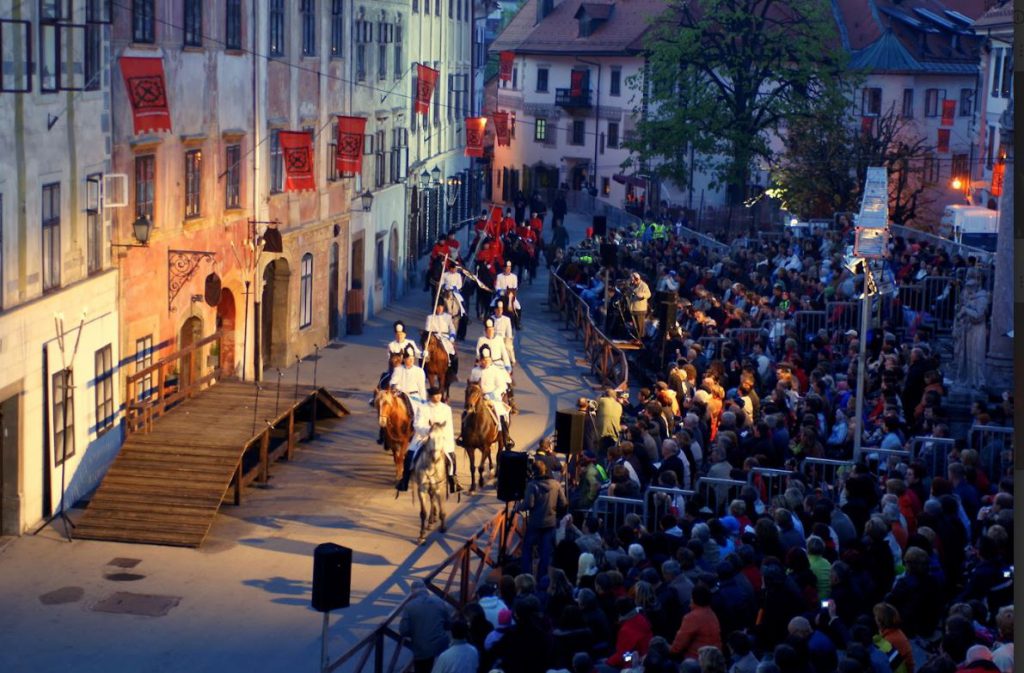
In Kranj, let your imagination be stirred by the times when the town was protected by walls with no fewer than eight defence towers. The importance of the town is manifested by the rich archaeological findings presented at the Gorenjska Museum in Pungert, where Khislstein Castle is also located. With its summer stage, it is the venue for many events throughout the year.
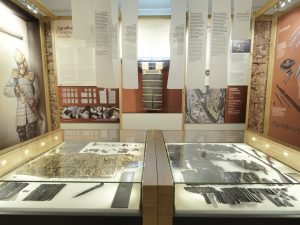
Kranj
Day 3 - Celje
Celje is the town of the counts of Cilli or Celje, the only noble family on Slovenian soil and one of the most important families in Southeast Europe. Their mighty and fortified castle, today known as the Old Castle, is the venue of a lively festival summer pulse. The Princely Palace in the city centre with the exhibition A Town Beneath Today’s Town presents the remains of Roman Celeia, an important ancient city.
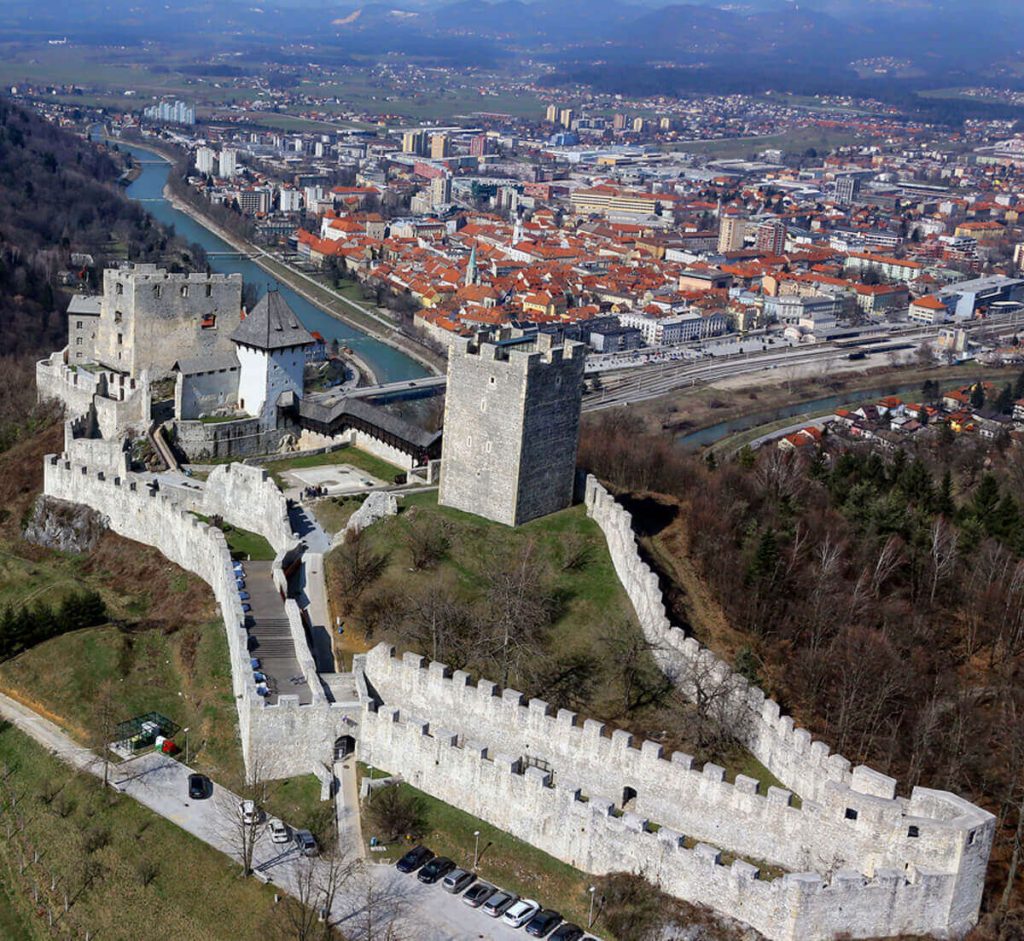
Day 4 - Ptuj
Ptuj is the oldest Slovenian town, as evidenced by numerous archaeological finds from Roman times. Ptuj Castle is one of the most important fortifications to defend against the Turks, with the preserved ancient defence system in the castle complex. The castle houses the Ptuj Museum with its rich collections. Make sure to include a visit to the oldest winery in Slovenia in your town tour.
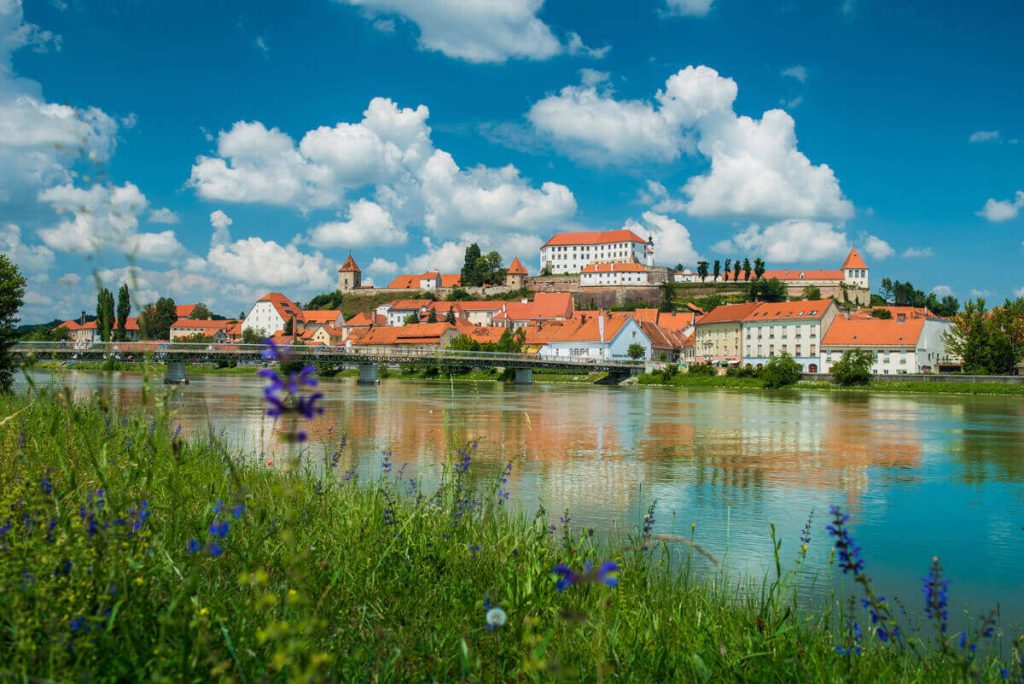
Po poti rokodelskih tradicij - sejem bil je živ
Po poti rokodelskih tradicij - sejem bil je živ
Mesta, v katerih so rokodelci srednjeveških cehov svoje izdelke nekoč prodajali na sejmih, še danes ohranjajo mojstrska izročila, stare jedi in glasbo minulih časov. V okolici sejemskih mest so pogosto vinogradi, na potepu po mestu in okolici pa se lahko ustavite v značilnih gostilnah s tradicionalno hrano in žlahtno pijačo.
1. dan – Jesenice in Tržič
Na Jesenicah si privoščite delavski zajtrk, nato pa se podajte na odkrivanje Stare Save, edinstvenega fužinskega območja v Evropi. Osrednji trg obkrožajo fužinarski industrijski objekti – ostanki plavža, delavska Kasarna, Bucelleni-Ruardova graščina, cerkev Marijinega vnebovzetja ter Kolpern – skladišče oglja.
Tržič je mesto, v katerem je bila ob koncu 19. stoletja v vsaki drugi hiši čevljarska delavnica. Danes lahko zgodbam čevljarskih mojstrov prisluhnete v Tržiškem muzeju, po celotne zgodovinskem jedru mesta pa se sprehodite po talnih odtisih kovinskih čevljev. Izročilo in tradicijo ohranja Šuštarska nedelja, ena najbolj obiskanih prireditev v tem delu Slovenije.
Tržič
2. dan – Radovljica
Radovljica preseneča s posebnostmi slovenskega čebelarstva – v čebelarskem muzeju sredi mesta ali ob posebnem čebelnjaku v bližnji Breznici. Na lectarski delavnici si izdelajte sladko lectovo srce. Ogled zaključite z Okusi Radol´ce v kateri od izvrstnih gostiln v mestu ali pa se na poti do Gradu Kamen, nekoč mogočnega gradu grofov Lamberg v Begunjah, ustavite v Vili Podvin v istoimenskem gradu, ki se ponaša z Michelinovo zvezdico.
Radovljica3. dan – Idrija
Idrija preseneča z dediščino drugega največjega rudnika živega srebra na svetu, danes vpisanega na UNESCO seznam Svetovne dediščine. Poiščite jamskega škrata v Antonijevem rovu in poizkusite rudarsko grenčico geruš. Spretne roke idrijskih žena vas bodo navdušile s prikazom izdelave čudovite idrijske čipke in pripravo idrijskih žlikrofov, evropsko zaščitene kulinarične specialitete. Si upate poizkusiti tudi vi?
Idrija4. dan – Kamnik
Kamnik, mesto v naročju Kamniško-Savinjskih Alp, je bilo že v srednjem veku cvetoče trgovsko mesto in najpomembnejše mesto Kranjske. Na ta čas nas spominja čudovita arhitekturna dediščina. Povzpnite se na enega izmed gradov v neposredni bližini mesta in prisluhnite zgodbi o kamniški Veroniki. Ne zamudite največjega etnološkega festivala v Sloveniji – Dneva narodnih noš. Pred odhodom pa poizkusite trnič – sir, ki so ga pastirji iz bližnje Velike planine podarjali svojim izbrankam.
KamnikWALLED TOWNS
WALLED TOWNS
Piran • Škofja Loka • Kranj • Celje • Ptuj The preserved medieval town walls, which once provided security and survival, today awaken the imagination with countless stories. Enjoy a stroll along the most beautiful highlights of Slovenian history.
Day 1 - Piran
Rising above Piran is a preserved section of the once mighty Renaissance town wall. It offers exceptional views of the sea and the town, which has “grown on salt”. Salt harvesting, which you can still see in the saltpans of Sečovlje, gave rise to the booming town at the time of the Venetian Republic. This is shown in a multimedia presentation in Mediadom.

Day 2 - Škofja Loka and Kranj
In Škofja Loka, open your eyes to the Gothic and Renaissance features of the walled medieval town at the foot of the hill, and Loka Castle. Today, the castle houses the Loka Museum, which presents the more than 1000 years of history of the town renowned for the Škofja Loka Passion Play – a staging of the oldest dramatic text in Slovenian language, classified as an Intangible Cultural Heritage by UNESCO.

In Kranj, let your imagination be stirred by the times when the town was protected by walls with no fewer than eight defence towers. The importance of the town is manifested by the rich archaeological findings presented at the Gorenjska Museum in Pungert, where Khislstein Castle is also located. With its summer stage, it is the venue for many events throughout the year.

Kranj
Day 3 - Celje
Celje is the town of the counts of Cilli or Celje, the only noble family on Slovenian soil and one of the most important families in Southeast Europe. Their mighty and fortified castle, today known as the Old Castle, is the venue of a lively festival summer pulse. The Princely Palace in the city centre with the exhibition A Town Beneath Today’s Town presents the remains of Roman Celeia, an important ancient city.

Day 4 - Ptuj
Ptuj is the oldest Slovenian town, as evidenced by numerous archaeological finds from Roman times. Ptuj Castle is one of the most important fortifications to defend against the Turks, with the preserved ancient defence system in the castle complex. The castle houses the Ptuj Museum with its rich collections. Make sure to include a visit to the oldest winery in Slovenia in your town tour.

WALLED TOWNS
WALLED TOWNS
Piran • Škofja Loka • Kranj • Celje • Ptuj The preserved medieval town walls, which once provided security and survival, today awaken the imagination with countless stories. Enjoy a stroll along the most beautiful highlights of Slovenian history.
Day 1 - Piran
Rising above Piran is a preserved section of the once mighty Renaissance town wall. It offers exceptional views of the sea and the town, which has “grown on salt”. Salt harvesting, which you can still see in the saltpans of Sečovlje, gave rise to the booming town at the time of the Venetian Republic. This is shown in a multimedia presentation in Mediadom.

Day 2 - Škofja Loka and Kranj
In Škofja Loka, open your eyes to the Gothic and Renaissance features of the walled medieval town at the foot of the hill, and Loka Castle. Today, the castle houses the Loka Museum, which presents the more than 1000 years of history of the town renowned for the Škofja Loka Passion Play – a staging of the oldest dramatic text in Slovenian language, classified as an Intangible Cultural Heritage by UNESCO.

In Kranj, let your imagination be stirred by the times when the town was protected by walls with no fewer than eight defence towers. The importance of the town is manifested by the rich archaeological findings presented at the Gorenjska Museum in Pungert, where Khislstein Castle is also located. With its summer stage, it is the venue for many events throughout the year.

Kranj
Day 3 - Celje
Celje is the town of the counts of Cilli or Celje, the only noble family on Slovenian soil and one of the most important families in Southeast Europe. Their mighty and fortified castle, today known as the Old Castle, is the venue of a lively festival summer pulse. The Princely Palace in the city centre with the exhibition A Town Beneath Today’s Town presents the remains of Roman Celeia, an important ancient city.

Day 4 - Ptuj
Ptuj is the oldest Slovenian town, as evidenced by numerous archaeological finds from Roman times. Ptuj Castle is one of the most important fortifications to defend against the Turks, with the preserved ancient defence system in the castle complex. The castle houses the Ptuj Museum with its rich collections. Make sure to include a visit to the oldest winery in Slovenia in your town tour.

Po poti rokodelskih tradicij
Po poti rokodelskih tradicij
Tržič • Idrija • Jesenice • Radovljica • Slovenj Gradec • Ravne na Koroškem
Mesta, v katerih so rokodelci srednjeveških cehov svoje izdelke nekoč prodajali na sejmih, še danes ohranjajo mojstrska izročila, stare jedi in glasbo minulih časov. V okolico sejemskih mest pogosto vabijo vinogradi in značilne gostilne z lokalno kulinariko.
1. dan - Jesenice in Tržič
Jesenice ponujajo ogled Stare Save – edinstvenega fužinskega območja v Evropi – osrednji trg, ostanki plavža, delavska Kasarna, Bucelleni-Ruardova graščina, cerkev Marijinega vnebovzetja ter Kolpern – skladišče oglja. Na potep se odpravite po jeseniškem delavskem zajtrku.
Tržič je mesto čevljarskih zgodb, ob koncu 19. stoletja je bila v vsaki drugi hiši čevljarska delavnica. To dediščino spoznavajte v Tržiškem muzeju, na potepu po centru mesta, kjer sledite odtisom čevljev, in na Šuštarski nedelji, eni od najbolj obiskanih prireditev v tem delu Slovenije.
JeseniceTržič
2. dan - Radovljica
Radovljica je mesto čebelarstva in mnogih sladkosti. V centru mesta vas čaka Čebelarski muzej, v bližnji Breznici čebelnjak. Na delavnici si izdelajte sladko lectovo srce, v izvrstnih gostilnah pa poskusite dobrote Okusi Radol´ce. V mestu, ki slovi tudi po festivalu čokolade, se ustavite v Hiši Linhart. Tu vrhunsko kulinariko ustvarja Uroš Štefelin, chef z Michelinovo zvezdico.
Radovljica3. dan - Idrija
Idrija preseneča z dediščino drugega največjega rudnika živega srebra na svetu, vpisanega na UNESCO seznam Svetovne dediščine. Poiščite jamskega škrata v Antonijevem rovu in poizkusite rudarsko grenčico geruš. Spretne roke v tem mestu navdušijo s prikazom izdelave idrijske čipke in pripravo idrijskih žlikrofov, evropsko zaščitene kulinarične specialitete.
Idrija4. dan – Koroška: Slovenj Gradec in Ravne na Koroškem
Na sprehodu po Slovenj Gradcu odkrivajte dediščino skladatelja Huga Wolfa in skrivnosti tradicionalnih medenih dobrot – medenjakov, lectovih src in bonbonov Medenega raja Perger. Bogastvo koroške obrtniške tradicije si oglejte v Koroškem pokrajinskem muzeju.
V Ravnah na Koroškem naj vas preseneti Forma Viva z umetninami iz železa in jekla. To je ena najbolj edinstvenih razstav na prostem v Evropi! Po obisku muzeja železarstva, posvečenega Materi fabriki, se okrepčajte s kvočevimi nudlni in drugimi izvirnimi koroškimi jedmi.
Slovenj GradecRavne na Koroškem

